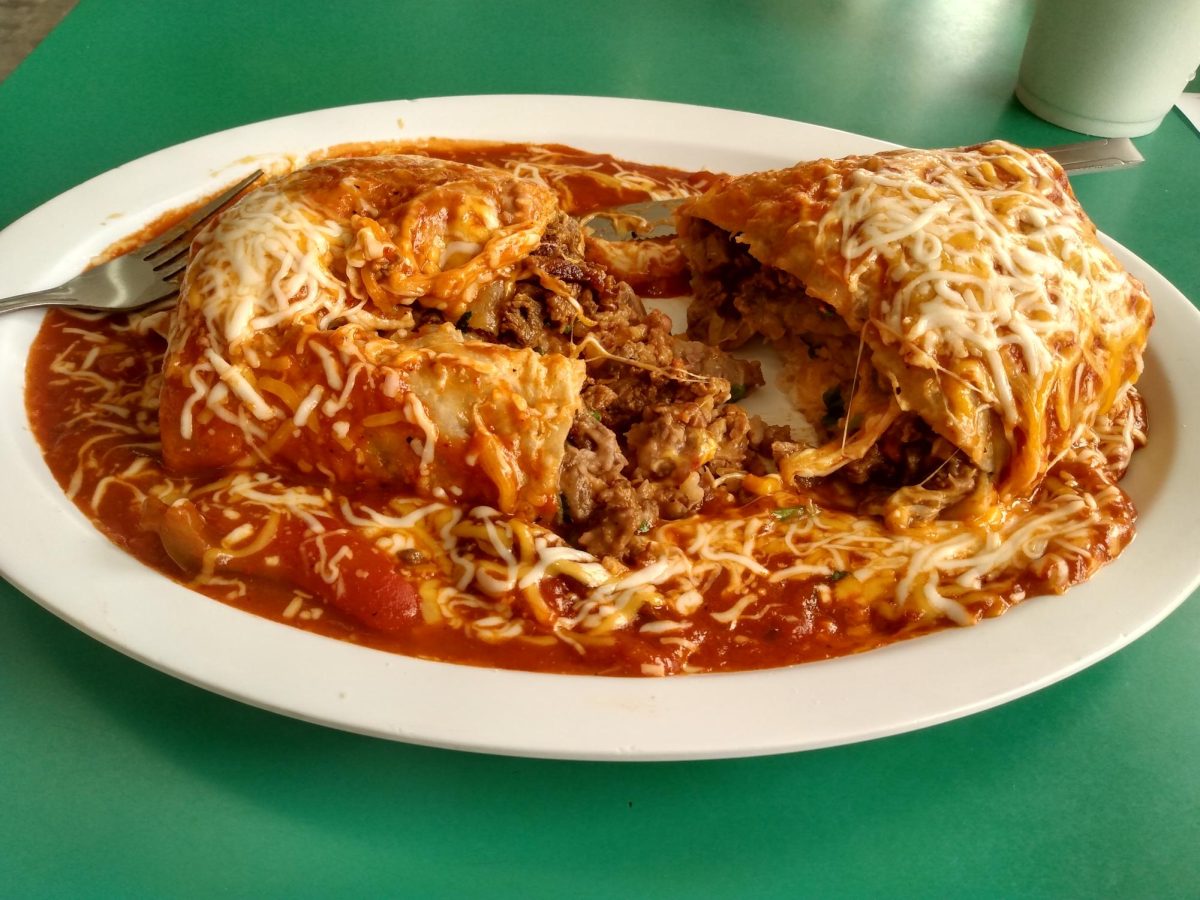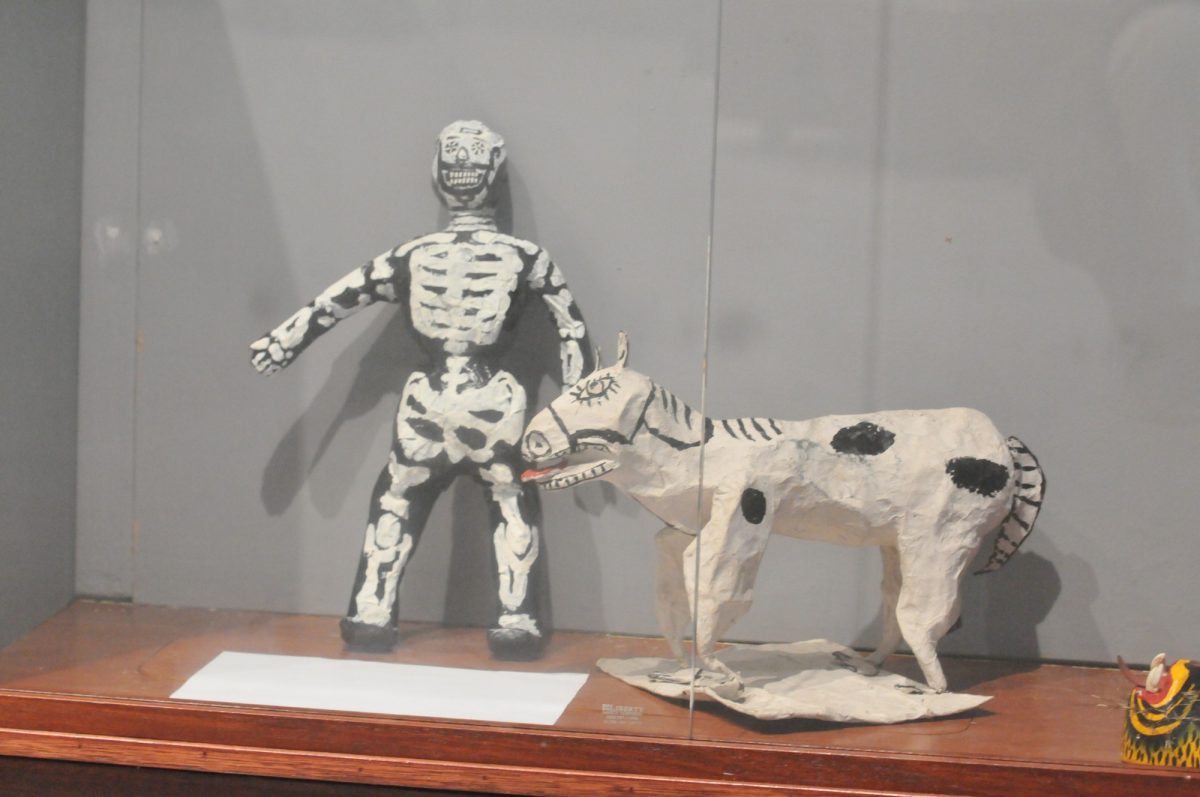More people wish they could eat healthier, but often times many tell themselves that they can’t.
Whether it’s because we’re in a rush, on a tight budget, or aren’t the greatest of cooks, we relegate ourselves to eating fast food value meals, instant noodle bowls and other junk foods.
March is National Nutrition Month, during which the Academy of Nutrition and Dietetics annually focuses on pointing out good food choices to sustain a balanced diet and encourage physical activity routines in order to promote good health, according to its website www.eatright.org.
And this month’s celebrated theme is “Eat Right with Color.”
As a way to enhance meals, eating a variety of colorful fruits and vegetables will provide the body with an array of nutrients and create a healthy diet, according to the academy.
With more than 40 types of fruits and 35 different vegetables, there is something that everyone will enjoy, John Featherstone, health instructor and football coach, said.
He also said students should start their morning off with fruits to cleanse the body and to eat vegetables later in the day for energy, with small portions of meat on the side as a form of protein.
Snacking in intervals throughout the day is also important in developing “sound eating habits,” according to the academy.
“Great snacks would include nuts, fruit or veggie cups and bananas,” Mary Lyons, nutrition and foods instructor and registered dietician, said.
Most importantly, students should stay hydrated. The amount of water each person must consume depends on physical activity and a person’s health. But remember to drink water with every meal to help with digestion, according to the academy.
Also keep in mind that the human stomach is no larger than the size of hands cupped together, so keep portions small, Featherstone said. To subdue hunger, students can always eat a snack in the late morning or afternoon.
And while conventional wisdom says that breakfast should be the largest meal of the day, that is only true if you have an extremely active morning, according to the website www.eatright.org. Otherwise, lunch should be the largest meal, rich in protein and whole grains.
In the spirit of National Nutrition Month, here are six snacks and five recipes to take on-the-go and help students regain control of their diets. No matter what the rush, these foods are easy to store and very economical for the student budget.
While these snacks and recipes are a good start, remember that variety is essential to a healthy diet. So add some color to the plate and start eating a balanced diet today.
Here are five recipes to jump start a balanced diet:
BREAKFAST WAFFLE
Ingredients:
1 whole-wheat waffle
½ cup honey
¼ cup creamy peanut butter
Add the peanut butter and honey into a microwave-safe bowl and microwave uncovered on high for about 40 seconds. Then stir until smooth and add the mixture to the top of the waffle. This recipe makes one serving and is 240 calories.
Remember, half of the grains you eat each day should be whole grains, which are a great source of fibers and contain vitamin B, the mineral selenium, potassium, magnesium and iron.
“Always choose a whole grain bread for fiber,” Lyons said.
PACKED TUNA SANDWICH
Ingredients:
2 tbs. each of chopped celery
and red onions
1 tbs. each of capers, lemon juice
and extra virgin olive oil
1 pinch of black pepper
1 can solid white tuna in water,
drained
4 slices whole-wheat bread
Toss everything but the bread into a bowl and stir thoroughly. Then spread the tuna mixture between two slices of bread. This recipe makes two sandwiches. This meal provides a healthy mix of protein, fiber, and iron with only 292 total calories.
“Tuna provides protein, and is also an excellent source of omega 3 fatty acids,” Lyons said.
PEARS AND COTTAGE CHEESE DIP
Ingredients:
¼ cup of cottage cheese
4-5 slices of pear
Slice the pear and add the two ingredients together in a bowl, mixing well. The recipe makes one serving and is 293 total calories.
This snack is packed with anti-oxidants, fiber and protein to give you a boost of energy in the middle of the day.
Not only can you add pears to this recipe, but any other fruit such as bananas, blueberries, pineapple, or strawberries can be combined with the cottage cheese. Add a little honey for a few extra calories and make it a sweet snack.
PEANUT BUTTER AND CELERY STICKS
Ingredients:
1 stalk of celery
A handful of raisins
1 tbs. peanut butter
Cut the celery in half and spread peanut butter over the hollow side. Take a handful of raisins and sprinkle on top of the peanut butter. This recipe makes one serving and has a total of 182 calories.
The quick snack is easy to eat while on the go. It provides vitamins A, B-6 and C, as well as iron, calcium, potassium, protein and fiber.
“This will provide protein, quick energy, fiber and some vitamins and minerals,” Lyons said.
CREAMY STRAWBERRY SANDWICH
Ingredients:
1 tbs. Greek yogurt
¼ tsp. honey
2 slices whole-wheat bread
2 medium strawberries, sliced
Put the Greek yogurt and honey in a bowl and mix until it comes together. Then spread the mixture on one slice of bread, place the strawberry slices on top and cover with another slice of bread.
This recipe makes one serving and provides vitamin C, potassium and protein. The sandwich contains 128 calories and is a great mid-day snack.







